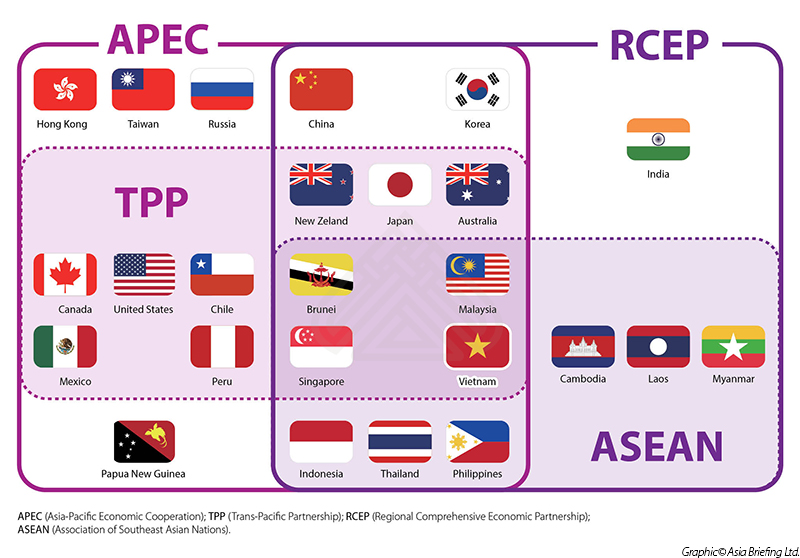LatAm states look to trade in bilateral deals for regional agreements
Emerging Markets | 27/03/2015
LatAm states look to trade in bilateral deals for regional agreements
Lucien Chauvin
Bilateral trade deals with Latin America have mushroomed in recent years but there is a growing desire to join two regional trade agreements that could link the continent into the economic powerhouses of South East Asia
Latin American countries are increasingly looking at two global trade agreements under negotiation that could form the foundation of the broader free trade area of the Asia Pacific, overshadowing the network of bilateral deals that have multiplied in recent years.
The Trans-Pacific Partnership (TPP), which was launched in 2008 and involves 12 countries in Asia and the Americas, should be the first of the new generation of agreements to be completed if negotiations wind up this year as planned.
Following the TPP was the launch in 2012 of the Regional Comprehensive Economic Partnership (RCEP). It has 16 negotiating states, including economic powerhouses of China, India and Japan. Seven countries, Australia, Brunei, Japan, Malaysia, New Zealand, Singapore and Vietnam, are members of both RCEP and TPP.
The other participants are Burma, Cambodia, Indonesia, Laos, Malaysia, the Philippines, South Korea and Thailand. China has called for negotiations to wind up in 2015, but this is wishful thinking given the number of participants and topics on the table.
The two agreements could form the foundation of the broader free trade area of Asia Pacific linking into a trade pact with the 21 economies that form the Asia-Pacific Economic Cooperation (APEC) forum. All TPP members are also in APEC, while this is not the case with APEC, with biggest outsider being India.
Trade pacts have multiplied over the past two decades, reaching more than 300, but this could stop soon as countries are looking for ways to improve and build on what is already out there.
“The TPP is a good example of the new architecture in trade, because it not only includes Japan and the United States, but harmonises agreements that have already been negotiated bilaterally,” said Antoni Estevadeordal, manager of the Integration and Trade Sector at the IADB.
FIND ‘missing link’
The TPP includes Australia, Brunei, Canada, Chile, Malaysia, Mexico, New Zealand, Peru, Singapore and Vietnam, in addition to Japan and the United States. Negotiators have pledged to finish talks this year.
Although there have been numerous disputes, the big hold up has been disputes between Japan and the United States over market access. While most of the countries in the talks already have bilateral agreements in place, the TPP is a vehicle for two of the world’s top three economies, Japan and the United States, to enter into a trade pact.
With the exception of the European Union (EU), trade agreements have tended to be bilateral and most often between large and small economies. Agreements between the major economies have been absent, creating a kind of “missing link,” according to Estevadeordal.
Alan Bollard, executive director of the APEC Secretariat, said while neither agreement is part of APEC, there is increasing interest among members that the agreements conclude to see where this could lead the region.
“No one in APEC is taking for granted that trade will continue to grow. It continues to expand, but at a slower pace in the past three years, so there is an opinion around the table that things need to get going.”
Both Bollard and Estevadeordal said there was a great deal of interest in Latin America’s Pacific Alliance, which includes Chile, Colombia, Mexico and Peru. Estevadeordal said the implementation of a common “single window” mechanism for trade flows was a major step forward in the new generation of trade agreements.






